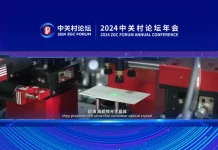Recent reports suggest that Japan is planning to restrict the export of Photoresists to China. This speculative news has led to an increase in the share price of many domestic companies in China that make photoresists. Investors are also rushing to buy companies that possess the technology, tools, and potential to manufacture photoresists, which are needed to make semiconductors.
Last week, Jiangsu Nata Optoelectronic Material Co saw an increase of up to 34.31 yuan per share. The company specializes in photoresist technology and makes a particular type of photoresist used in semiconductors. Crystal Clear Electronic Material Co, which produces ultra-pure materials for major semiconductor firms like Semiconductor Manufacturing International Corp, ChangXin Memory Technologies, and Hua Hong Semiconductor, saw an increase of 7.3% in its share price. Chemical manufacturers Shenzhen Rongda Photosensitive & Technology Co and Shenzhen Tongyi Industry Co gained almost 20% last week. These two companies specialize in making chemicals that are used in chip manufacturing processes.

What is Photoresist and why is it important?
A photoresist is a light-sensitive substance that is used in photolithography technology which is the standard method of printed circuit board (PCB) and microprocessor fabrication. Photoresists are made up of polymers, sensitizers, and solvents. It plays a vital role in manufacturing semiconductors.
The global photoresist market is dominated by Japanese and American companies. Japan is almost a monopoly in this industry with just four Japanese companies the JSR, Tokyo Ohka Kogyo, Shin-Etsu Chemical, and Fujifilm Electronic Materials, having a combined 72.5% market share. Moreover, the high-resolution KrF/ArF semiconductor photoresists and the advanced EUV photoresist tech are available with Japanese companies only.
If Japan stops the sale of Photoresists, then it will be difficult for China to manufacture advanced semiconductors. Though China has made huge progress in producing photoresists, it still relies on Japan for advanced technology. Domestic producers can make photoresists for legacy nodes, but the high-end photoresists must be imported from Japan.
According to Xuan Jiyou, a researcher at the Kandong Research institute, Even though China has progressed in this field and made breakthrough research in photoresist technology, it will take a long time for the country to produce high-end photoresists on a large scale.
Related:
- China Sees Sharp Fall in Semiconductor Imports: US Sanctions Taking a Toll on the Industry
- Semiconductor Industry Association asks Japan and Netherlands to Tighten Curbs on China
- China Said to Use Whole Nation Approach to becoming Self Reliant in Semiconductors and Combat US
(source)







